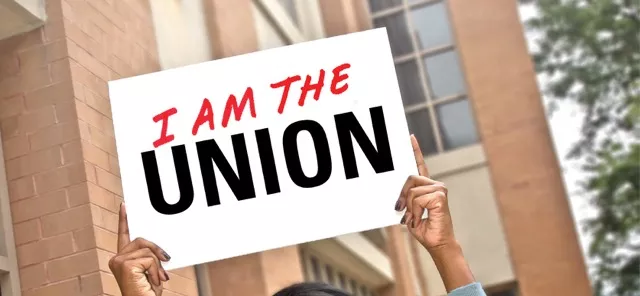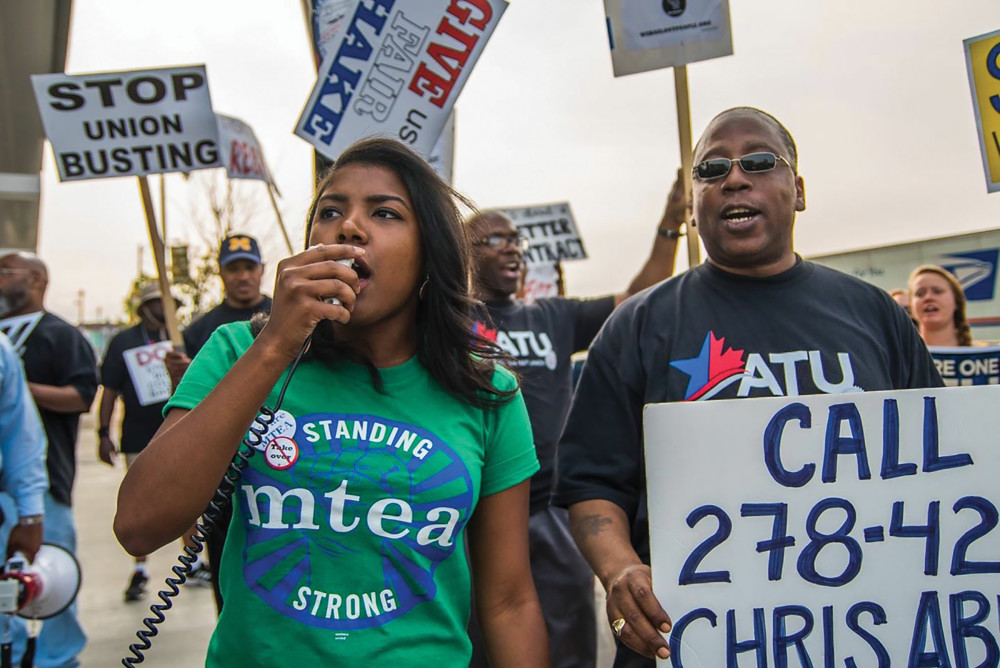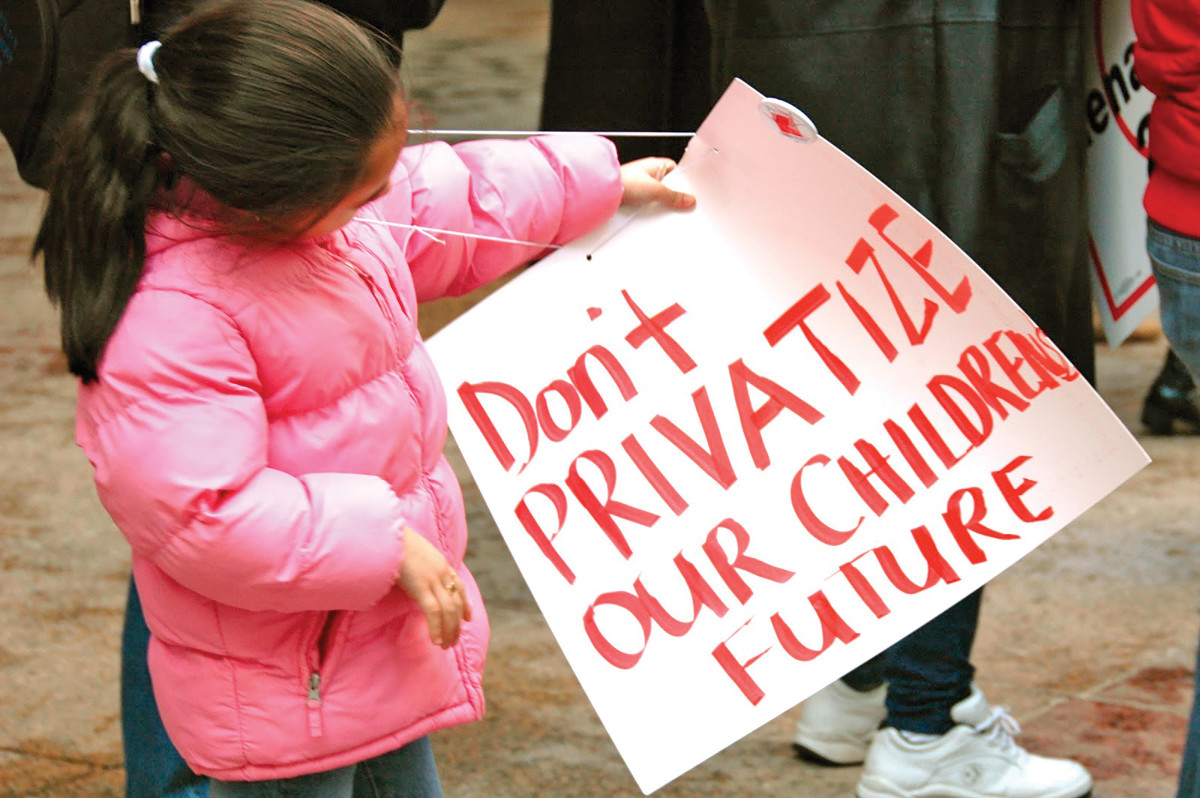Educators are driven by purpose. There’s the day-to-day purpose of helping students learn, but there’s also a higher purpose—a calling—to help improve students’ lives, especially for the growing number who struggle with poverty. Educators refuse to stand by and ignore the gap between the equal opportunity America espouses and the socioeconomic reality they see in their schools.
That’s why another generation of NEA members is fighting for equal opportunity for all students. Teachers and education support professionals are standing together to demand better for our schools and our children and for the common good of our communities.
They are NEA’s social justice activists.
“NEA members are organizing around issues that extend far beyond bread and butter concerns,” says NEA President Lily Eskelsen García. “They’re organizing and advocating for their students—from class size to adequate resources to family involvement. They are banding together to make their voices heard and demanding that the needs of all our students—including those in the most impoverished neighborhoods—be addressed.”
Social justice activism isn’t new. Rank-and-file union activists have advocated for social justice for years and it’s based on the same principles organized labor has always championed: Solidarity, equality, democracy, and justice.
But the country has entered a seminal moment, and this model of unionism could hold the key to preserving public education as a right for all Americans. As the income gap threatens to swallow the middle class, public school educators are being battered by a perfect storm of political, legal, and corporate attacks that would strip educators of their rights, ignore the needs of huge populations of students, and ultimately privatize education, further widening the income gap and diminishing the rights and opportunities of the poor.
NEA Working For Families and Teachers
Teachers are overwhelmed by the day-to-day work of education, while time and resources continue to shrink. Many educators figure they’ll leave activism to elected leaders while they focus on schools and classrooms. More than ever, educators need to band together to form a broad coalition of community partners to address the issues facing our students.
For example, members of the Massachusetts Teachers Association organize other members, and have aligned MTA resources, into a movement that urges educators — school by school — to get involved. The message: You are the union. Our power is in collective action, and together we can win the schools our students deserve.
The effort is about creating a broader focus that combines traditional bread-and-butter bargaining and fighting for true school reforms to help students and make communities more just and democratic.
Many times, the reason educators are overwhelmed with the day-to-day of teaching is because of bad policy — such as the use of high-stakes standardized testing. MTA members, including members of Educators for a Democratic Union, a group that has brought social justice concerns forward for discussion and action, organized the delegates at the association’s recent annual meetings to create this focus within the union — and the MTA’s work is now guided by member-driven mandates to do battle with high-stakes testing, to inform parents about their right to opt students out of standardized tests, protect educators who take a stand against standardized tests, hold community forums and build community alliances, and use the collective bargaining process to address policy issues in addition to traditional ones.
Several months ago, the MTA helped found a coalition called the Massachusetts Education Justice Alliance. In June, the MEJA, with the participation of large numbers of MTA members, launched a “Less Testing/More Learning” campaign with a successful Week of Action.
Thousands of MTA members wore stickers, posted messages on social media and contacted legislators. MTA members also packed a State House hearing to demand a moratorium on the high-stakes use of testing, and testified at a forum on PARCC — the Partnership for Assessment of Readiness for College and Careers.
Across the MTA, a groundswell of enthusiasm is building among educators who became fed up with bad policies and felt defeated and demoralized. Now, they look at each other and say: Look what the union is doing. The MTA is fighting back. I want to be a part of that.
“An invitation to a lobby day isn’t enough,” says Massachusetts high school history teacher Jamie Rinaldi, an MTA member and a member of the EDU. “Rhetoric and emails don’t inspire. The assault on public education and teachers’ unions has never been more intense, and we need a movement. This is an awakening moment, and people need to realign their notion of what being a member means.”
“We are very upfront about racism, poverty and corporate assaults,” Rinaldi says. “We’ve got a bold, broad vision and we’re showing that we can beat them at this stuff. It’s a wakeup call. The question isn’t, ‘What is the union doing about it?’ It’s, ‘What are you doing about it?’ The union is you.”
The Spread of "Right-to-Work" Legislation
“I’m from Wisconsin. I’m from your future.”
That’s how Bob Peterson, past president of the Milwaukee Teachers’ Education Association and longtime social justice unionism advocate, starts his presentations to educators nationwide.
“It would be funny if it weren’t true, but Right-to-Work legislation is spreading and the public sector is under attack,” Peterson says, referring to laws that require employees to work without on-the-job protections—legislation that passed while he led the Milwaukee Teachers’ Education Association.
Wisconsin has a long, progressive history. It was the first state to give public employees the right to collectively bargain in 1959, and the first to establish workers’ compensation and unemployment insurance.. But progress came to a halt in 2011 when Scott Walker moved into the governor’s mansion.
Union Bashing and Push for Privatization
At the height of the recession and skyrocketing unemployment, Walker worked to turn public sentiment against unions. The message: That public sector workers shouldn’t have secure jobs, pensions and decent wages if private sector workers didn’t have them, too. Walker ignored data indicating that when states have unions and collective bargaining, wages raise for all workers. Instead, he proposed Wisconsin Act 10, a plan designed to dismantle public sector unions. Passed by the state’s legislature, the measure prohibits public workers from bargaining over anything except wages, ends the automatic deduction of union dues from workers’ paychecks, and requires challenging yearly votes for unions to remain certified. The annual “recertification” requires every local that hopes to retain the ability to bargain collectively over base pay (the only thing they are now allowed to bargain for) to not only win a majority of those who vote, but a majority of all eligible to vote. The legislation cuts unions off at the knees without actually killing them outright. Now, when unions fail to recover from the near fatal injuries, it will look like it’s their fault.
“The social justice component…calls for democratic, participatory union membership; special attention to collaboration and alliances with parents and community organizations; and a concern for broader issues of equity and racial justice throughout society. It also recognizes the need for unions to organize teachers to weave anti-racist, social justice teaching throughout their curriculum.”
“We are now the ‘Right-to-Work-for-Less’ state,” says Peterson. “And on top of his anti-union legislation, [Walker] made massive cuts to public education. We are a target for Walker and his 1 percent friends.”
As attacks on public schools continue to grow—becoming highly organized, sophisticated and strategic—the target is getting wider. The goal? Defund public education to the point of crippling it, criticize it for being ineffective, then advocate for privatization.
The Fight Against Fair Share
It’s a multi-front war with attacks moving from the state house to the court house, including the highest court of the land. Next year, the Supreme Court will hear arguments in Friedrichs v. California Teachers Association, which aims to overturn a nearly 40-year precedent allowing the use of “fair share” fees for public sector unions. The plaintiffs are California public school teacher Rebecca Friedrichs and the Christian Educators Association International, an organization that opposes marriage equality and affirmative action, supports the teaching of Creationism, and is backed by the conservative Center for Individual Rights (CIR) and hard-right libertarians like Michael Carvin, the lead counsel for CIR in the lawsuit.
The plaintiffs claim that fair share fees violate their free speech. Although agency-shop provisions require that those who object to joining the union pay a fee that represents the portion of union dues that goes to the collective bargaining activities, non-members can request to be excused from contributing to the union’s political activities. Still, the plaintiffs argue that they shouldn’t have to pay for any of the job protection services they receive.
“Making it possible for workers to get the benefits of union membership without paying any of the costs encourages freeloading, which weakens unions financially, which makes it more difficult for them to represent their members or organize workers, which weakens all workers,” writes Laura Clawson for Daily Kos, a popular progressive blog providing U.S. political analysis.
And that is exactly what corporate profiteers pushing an anti-union agenda want. The Koch brothers, for example, funnel millions into campaigns that include privatizing public education, defunding public schools in favor of for-profit education, dismantling worker rights, eliminating the minimum wage, and limiting the voting rights of the poor, young adults and minorities.
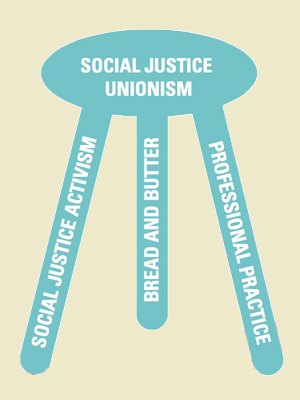 Marcelia Nicholson grew up in a racially segregated, high poverty neighborhood in Milwaukee. She says her family didn’t have much money, and she spent a lot of time with her grandmother in their apartment while her parents were working multiple jobs, trying to cobble together enough money to pay bills and the mortgage. The neighborhood had few businesses and high crime, so Nicholson spent most of her time indoors. Drug dealers occupied many of her neighborhood’s street corners, and nighttime gunshots were a familiar sound.
Marcelia Nicholson grew up in a racially segregated, high poverty neighborhood in Milwaukee. She says her family didn’t have much money, and she spent a lot of time with her grandmother in their apartment while her parents were working multiple jobs, trying to cobble together enough money to pay bills and the mortgage. The neighborhood had few businesses and high crime, so Nicholson spent most of her time indoors. Drug dealers occupied many of her neighborhood’s street corners, and nighttime gunshots were a familiar sound.
Nicholson knows what it’s like to be ignored by corporate America. Manufacturing had moved out of Wisconsin, destroying working class neighborhoods in Milwaukee, particularly in African-American communities like hers. The result: Poverty grew, and Milwaukee is now the nation’s second poorest city.
During the years she was in school, the union didn’t address the issues that challenged Nicholson’s community. She had caring, attentive teachers, but the broader issues of joblessness and poverty weren’t part of the union’s agenda, which created a chasm between the union and the community. When right-wing conservatives came in with ideas for vouchers and charter schools, there was an audience. The community felt disconnected and ignored by their neighborhood public schools and educators, so they were open to alternatives.
A Fight Against Poverty is a Fight for Learning
“This is what I saw growing up, and kids in my school are seeing the same violence and crime today, but they need to know we care and we’re doing something about it,” says Nicholson, a teacher of record at Pierce Elementary School. “They’re coming to school with this stress on their shoulders. Their cousins are being killed. Their fathers are being arrested. They don’t learn as well under those conditions, but instead of helping them, we punish them by taking resources away while the successful suburban schools get more. That’s why we’re fighting for minimum wage workers, immigrant rights, and other issues that lift people out of poverty.”
Nicholson typifies the young, idealistic and energetic educator who are rising in numbers in our schools and in NEA. She is active in her union because she knows it involves educators taking the lead on social reform in their communities and combatting the racism, classism and prejudice so many students and their families experience every day.
“The union appeals to me because the union provides me with a platform to speak about the injustices faced by many of our students and their families,” she says.
“We’re reaching out to parents, community members and elected officials to show them the havoc that’s created when schools are privatized in poverty-stricken neighborhoods. Just take a look at Detroit or New Orleans.”
Nicholson has been involved in a fight to block a school takeover bill proposed by Republican legislators. The lawmakers live in affluent suburbs that are nowhere near the Milwaukee schools they want to place into the hands of a non-elected commissioner.
“We’re reaching out to parents, community members and elected officials to show them the havoc that’s created when schools are privatized in poverty-stricken neighborhoods . Just take a look at Detroit or New Orleans ,” she says.
NEA’s social justice activists are also making the connection between schools, students and the community where parents of students live and work. Parents’ struggles affect their children. In turn, the students’ academic achievement suffers. That’s why Nicholson and her MTEA colleagues partnered with the Amalgamated Transit Union during their strike.
“Community members are the parents of our students, and we wanted to send a message that Milwaukee’s city workers deserve fair contracts, humane working conditions, and the right to collectively fight for what we all believe,” she says. “We also educated the transit workers about the takeover plan and the importance of public neighborhood schools. Now we have a strong alliance that will benefit both groups going forward.”
Nicholson also values the classroom aspects of social justice unionism that fosters culturally responsive curriculum that empowers students to overcome adversities and teaches them to advocate for others.
“To me, social justice unionism is teachers taking the lead on social reform while incorporating culturally appropriate curriculum that helps students think critically about the world they live in, promoting activism in the classroom to combat racism, classism and prejudice while encouraging equity,” she says.
In fact, social justice should be tightly woven into curriculum, according to Wisconsin activist Bob Peterson’s definition in his book Transforming Teacher Unions: Fighting for Better Schools and Social Justice.
“The social justice component…calls for democratic, participatory union membership; special attention to collaboration and alliances with parents and community organizations; and a concern for broader issues of equity and racial justice throughout society. It also recognizes the need for unions to organize teachers to weave anti-racist, social justice teaching throughout their curriculum.”
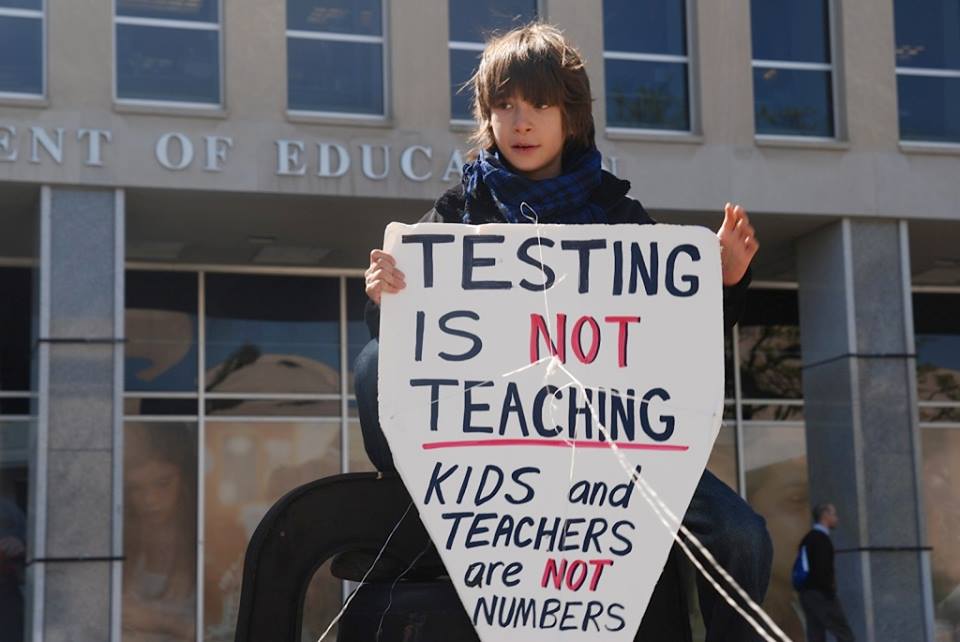 There are three components of social justice unionism that Peterson sets forth in his book, and one of those relates to issues of curriculum and professional practice. Another leg is comprised of the traditional bread and butter issues relating to salary and benefits that attract quality educators, and the third leg is social justice. The three legs support the social justice unionism stool. Without all three, the stool becomes unbalanced and will fall. That’s why it’s important to highlight the curriculum and professional practice issues that allow unions to play a leading role in areas that impact the work of teachers, such as assessments and accountability, quality of school programs, and pedagogy.
There are three components of social justice unionism that Peterson sets forth in his book, and one of those relates to issues of curriculum and professional practice. Another leg is comprised of the traditional bread and butter issues relating to salary and benefits that attract quality educators, and the third leg is social justice. The three legs support the social justice unionism stool. Without all three, the stool becomes unbalanced and will fall. That’s why it’s important to highlight the curriculum and professional practice issues that allow unions to play a leading role in areas that impact the work of teachers, such as assessments and accountability, quality of school programs, and pedagogy.
Unionism in Professional Practice
Like Marcelia Nicholson, Maren Johnson—a young science teacher from rural Washington state—embodies the values of NEA. She is deeply involved in the professional practice arena of social justice unionism with the Washington Education Association (WEA).
Johnson has been on leave from her science teaching position to serve as an intern with the WEA National Board program. She works on National Board candidate outreach and teacher leadership as part of a Network to Transform Teaching (NT3) grant. Funded by the US Department of Education through the National Board for Professional Teaching Standards, this grant is a partnership between WEA, the Office of Superintendent of Public Instruction, and the Center for Strengthening the Teaching Profession (CSTP), an independent non-profit.
Last spring, Johnson worked with WEA Olympic to host a National Board Teacher Leadership Academy to encourage more Nationally Board Certified Teachers (NBCTs) to become leaders and to work in the state’s high needs schools, where highly qualified and motivated teachers are most needed.”
The NBCTs appreciated that the union recognized them as leaders, but more importantly, they began to see the union as something relevant to their profession—a valued ally that helps them get more planning and collaboration time during the school day, and provides support for professional development. One of the graduates of the academy, which featured NEA Foundation courses, joined her local bargaining team and was able to reduce case loads for special education teachers so they could provide more individual support.
“We are showing educators that working with the union leads to better conditions for student learning because if it’s not in the contract language—if it’s informal and left up to the administration—it can easily change or be abandoned,” she says. “If it’s in the bargaining language, it’s durable and long-lasting.”
Washington state still has agency fee and a fair share program, but it—and every state— faces an uncertain future with the Supreme Court’s ruling on the Friedrichs case. That’s why when Bob Peterson speaks around the country, he warns that collective bargaining is under threat. He led the Milwaukee union for four years after Walker’s attacks on public sector unions and tells educators around the country that he hopes such attacks don’t spread. If they do grow, the attacks—Peterson says—create an opportunity to build broader member consciousness and participation in a social justice union.
Joining the union is more than a personal commitment – it’s a pledge to join with colleagues across our schools and people across our communities. It’s empowering as members realize the union is first person plural – we are the union. Together our voices are stronger and we are empowered to stand up for strong public schools that create opportunities for all students.
